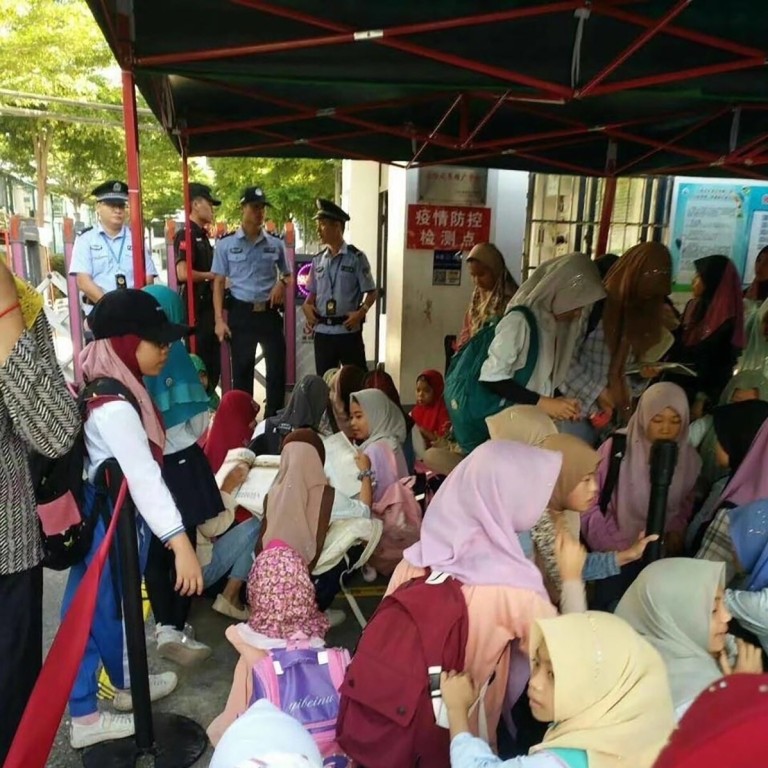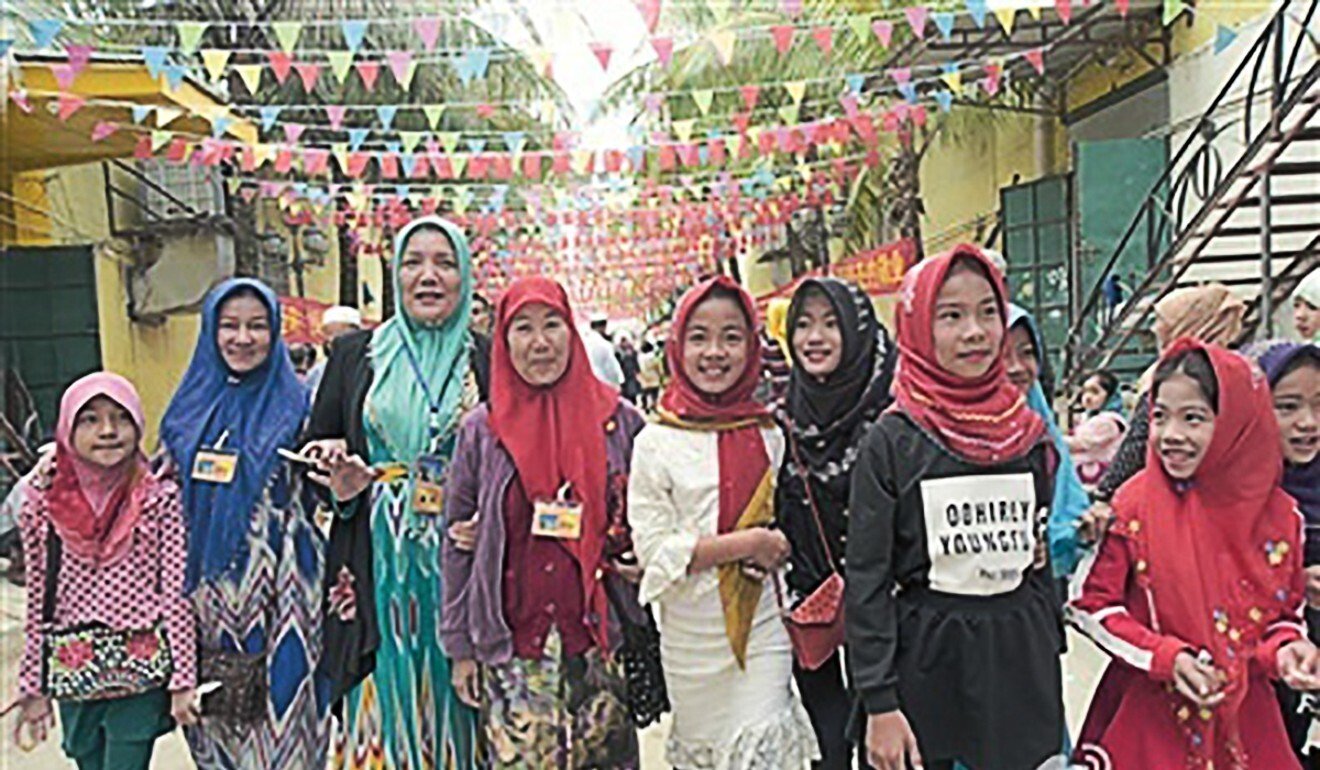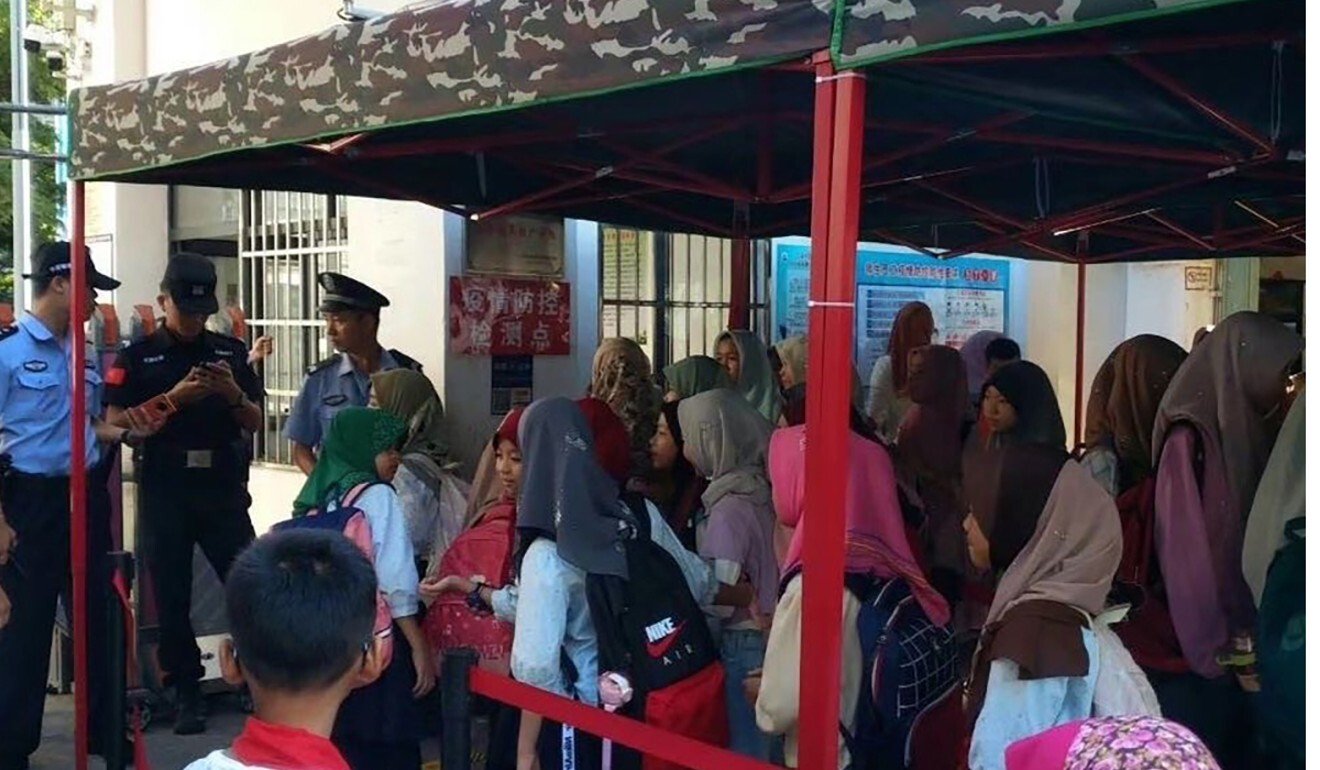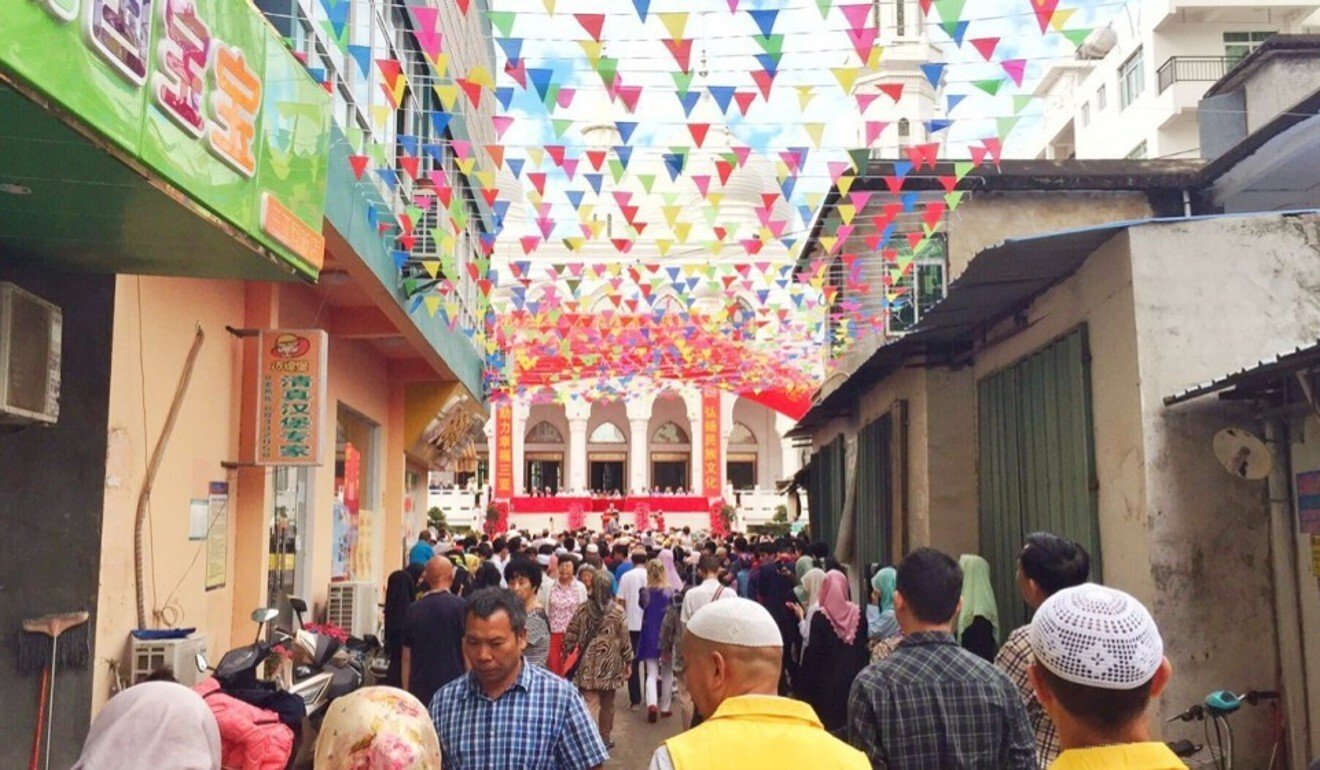
Tiny Muslim community in China’s Hainan becomes latest target for religious crackdown
- The Utsuls of Hainan island are only around 10,000 strong, but are now facing increasing surveillance and a crackdown on traditional clothing
- China’s treatment of Uygurs in Xinjiang is the main focus of international alarm, but Sinicisation policies have targeted a wide range of minorities
The latest moves banning traditional dress in schools and government offices targeted the Utsuls, a little-known population of around 10,000 people based in Sanya, a city on the island province of Hainan, almost 12,000km (7,400 miles) from Xinjiang.
Communist Party documents also suggest the authorities will increase their surveillance of residents in Muslim neighbourhoods to “resolve problems” and tighter restrictions on religious and “Arabic” architecture will be imposed.
An order banning the hijab from schools prompted protests from schools in Utsul neighbourhoods earlier this month, and pictures and videos circulating on Chinese social media showed a group of girls wearing headscarves reading from text books outside Tianya Utsul primary school while surrounded by police officers.

“The official line is that no ethnic minority can wear traditional garments on school grounds but other ethnic minorities [in Sanya] don’t wear traditional garments in their daily life so it’s makes no difference to them but to us the hijab is an integral part of our culture, if we take it off it’s like stripping off our clothes,” said an Utsul community worker, who requested anonymity due to the sensitivity of the matter.
US House passes forced labour bill that would bar Xinjiang imports
In 2015 the regional legislature passed a law banning the veil and “any other clothing that promotes extremist religious thought” in Urumqi, wording that could easily be applied to the hijab, and extended it across Xinjiang two years later.
However, no reason was given for the ban on traditional dress for Sanya’s Utsuls. The community worker said that Utsul women working in the Sanya municipal government or the city’s local Chinese Communist Party branch were also banned from wearing the hijab to the office late last year.
Utsuls working in the government or Communist Party bodies have been told only that the hijab is “disorderly”.

The Sanya municipal government declined multiple requests for comment.
But a Communist Party document from last year seen by the South China Morning Post and verified by the community worker suggests that the ban is the latest manifestation of a concerted campaign to “Sinicise” the handful of neighbourhoods where Utsuls live, eat, and pray.
The four-page report, entitled “Working Document regarding the strengthening of overall governance over Huixin and Huihui Neighbourhood”, is aimed at the only two neighbourhoods in Sanya where most residents are Utsuls.
The report from the Communist Party branch in Tianya, the district where Huixin and Huihui neighbourhood are located, details a list of measures to be implemented.
Mosques will have to shrink in size when being rebuilt and buildings with “Arabic tendencies” will be banned. Arabic script must also be removed from shopfronts, along with Chinese characters such as “halal” and “Islamic”.
Xi Jinping defends ‘totally correct’ Xinjiang policies despite growing human rights concerns
Monitoring of Utsul residents was also deemed to be a key priority for upholding “social order” and “resolving the problems” in these two neighbourhoods.
Utsul party members will be subject to investigations to ensure they are not practising Muslims (the Chinese Communist Party is officially atheist) and will face punishment if found to be religiously observant.
Besides hijabs, the long skirts Utsul women traditionally wear are banned in schools and workplaces, and mosques must now have a Communist Party member sitting on their management committees for monitoring purposes.

These measures mirror policies that were first developed in Xinjiang and have since been implemented across the country.
In 2018, China’s State Council issued a classified directive, titled “Reinforcing and Improving Islam Work in the New Situation”, which ordered the removal of any Arabic features from mosques, among many other restrictions.
Since then, mosques in regions and provinces outside Xinjiang have had their domes removed, covered, or replaced with tiled Chinese-style pagodas.
According to the Utsul community worker, the ban on wearing the hijab was met by fierce protests from pupils and their families.
Xinjiang: China’s white paper may point to forced labour claims, experts say
The ban was temporarily lifted last Tuesday after hundreds of pupils at three schools refused to remove the headwear and others boycotted classes in a show of support.
The government’s Sinisication efforts have targeted other minorities in recent years.
China’s Huis, the country’s largest Muslim group, have also been targeted, even though they largely speak Mandarin.

Ma Haiyun, an associate professor of history at Frostburg State University in Maryland, said Xinjiang was a “laboratory” for repressive policies against Islam that are now being emulated all across China.
Ma, who is a practising Hui Muslim, added that there was clear double standard in attitudes towards traditional clothing.
Ma also said that targeting the Utsuls in Sanya could create problems where none existed before, adding that for Utsul women wearing the hijab was an inherited tradition rather than a sign of religious fervour.
The Utsul community worker agreed, noting that local officials mischaracterised the custom as “religion being imposed upon minors”.
They said: “What our religion dictates is that girls who have not menstruated do not have to wear the hijab but they wear it because of habit, it’s just a custom, I don’t understand why this issue has to be mixed up with religion.”

Although the number of Utsuls is tiny compared with the Uygurs or Huis, who are both around 10 million strong, targeting them could still damage China’s delicate relations with Southeast Asian countries, with whom they have strong cultural ties.
The Utsuls are descendants of the Cham people who used to inhabit the kingdom of Champa in modern-day Vietnam, where Islam became the dominant religion in the 17th century.
The Utsuls also have their own language, which is similar to Malay.
“Before Covid-19, it was common for us to go to Southeast Asia for study and travel, whenever we are there, there is this feeling of familiarity,” said the Utsul community worker.
Ma said Malaysia and Indonesia, both majority Muslim countries, had been building ties to the Utsuls in recent years and former Malaysian prime minister Abdullah Ahmad Badawi, who grandmother was an Utsul, has visited Sanya several times.
Ma said that if repression against the minority continues, anti-Chinese sentiment in countries like Malaysia could easily boil over.
“By just beating up on this small group of 10,000 Utsuls [local authorities] can ruin China’s image among the Southeast Asian people, which could encourage their governments to become more populist and incite hatred against the Chinese diaspora,” he said.
The Maryland-based academic also argued that using access to education to threaten the Utsuls is at odds with Beijing’s plan to make Hainan into a free-trade zone by 2025.
“How can you say that you will be the freest and most tolerant free-trade zone when you can’t even guarantee these students their basic right to education? It just strikes me as slightly farcical.”

